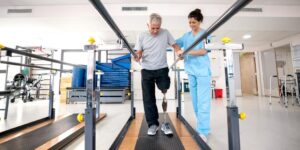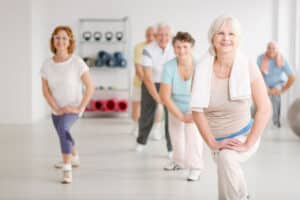
Old age helps us to appreciate the importance of having a strong immune system for good health and happiness. Many people aged 65 or above are not drinking sufficient fluids, which can considerably affect their immunity capacity. Hydration is very important for supporting our body’s different functions, including the immune system’s efficiency.
In this post, we’ll explore the link between hydration and immune health in seniors. If we understand why it’s crucial to be properly hydrated and put into practice helpful recommendations, older people can boost their immunity and general wellness.
Understanding the Role of Proper Hydration
No matter your age, the first rule for good health is always proper hydration. This especially holds true for seniors who need to maintain enough fluids in their body, which aids in many functions such as the immune system.
Water assists with transporting nutrients throughout our bodies, managing body temperature and eliminating waste products from within us. These actions all contribute to maintaining a robust immunity response.
Understanding Electrolytes and Their Role
Electrolytes are important minerals. These include sodium, potassium and magnesium, which help to maintain the balance of fluids in our body. They play a crucial part in supporting hydration by making certain cells get sufficient water and nourishment.
When a person gets older, their body finds it harder to hold on to enough nutrients. Drinking electrolyte hydration powder could be helpful in such situations. These powders contain a mix of minerals that can assist seniors in replenishing their lost electrolytes from sweat or urine more effortlessly.
Daily Hydration Needs for Seniors
For older people, the need for hydration might be different compared to younger adults because kidney function changes with age and they feel less thirsty. Each person’s requirement for water can differ based on their particular circumstances such as age, activity level and overall health conditions.
But generally speaking, it is advised that seniors try to have a minimum of eight glasses each day. It is important to note that the total sum also covers fluids from beverages and foods with considerable water content, like fruits or vegetables.
Signs and Symptoms of Dehydration in Seniors
The symptoms of dehydration are very important for seniors’ immune health. They may feel a dry mouth, and experience headaches, tiredness, dizziness and confusion. It is possible that older adults do not perceive thirst even if they need fluids; therefore it becomes crucial to frequently check hydration levels, especially when the weather is hot or they’re physically active.
Practical Tips for Increasing Water Intake
For the elderly, it may not be so easy to make them drink more water. But there are various methods for making hydration more interesting in everyday life: having water during meals, keeping a reusable bottle close by and putting fruits or herbs into it. Also, using foods that provide hydration like cucumbers, melons or soups can help improve their overall hydration.
Hydration Beyond Water: Healthy Fluid Alternatives
Though water is the top choice for hydration, other fluids can add to your overall goal. Herbal teas such as chamomile or peppermint offer hydration and possibly health advantages like calming digestion or helping in relaxation. Juices with low sugar content and smoothies you make yourself using ingredients that hydrate like coconut water or yogurt might be enjoyable options too.
Incorporating Hydration into Daily Routine
Ensuring optimal health involves integrating hydration into your daily schedule. Seniors can maintain their hydration goals by scheduling water breaks in the morning and afternoon. Forming habits like drinking water before meals or after physical activity can help maintain consistent fluid intake as well.
Consulting with Healthcare Professionals
The amount of fluids individuals require can differ significantly depending on their health issues and the medications they take. Older adults who have particular concerns about staying hydrated or show signs of dehydration should seek advice from their healthcare provider.
A physician or nutrition specialist can give tailored suggestions regarding how much fluids they should drink and offer advice on handling long-term health problems that might impact hydration levels.
Final Thoughts
Helping seniors stay hydrated is an easy and effective method of boosting their immune health. By knowing about hydration’s function, realizing the significance of electrolytes, and putting into action simple methods to boost water consumption, older people can improve their general wellness.
Keep in mind that remaining hydrated does not only involve drinking water; it also means giving your body enough nourishment and energy for the golden years. By making hydration a priority and consulting experts when necessary, seniors have the power to live better and healthier lives.








